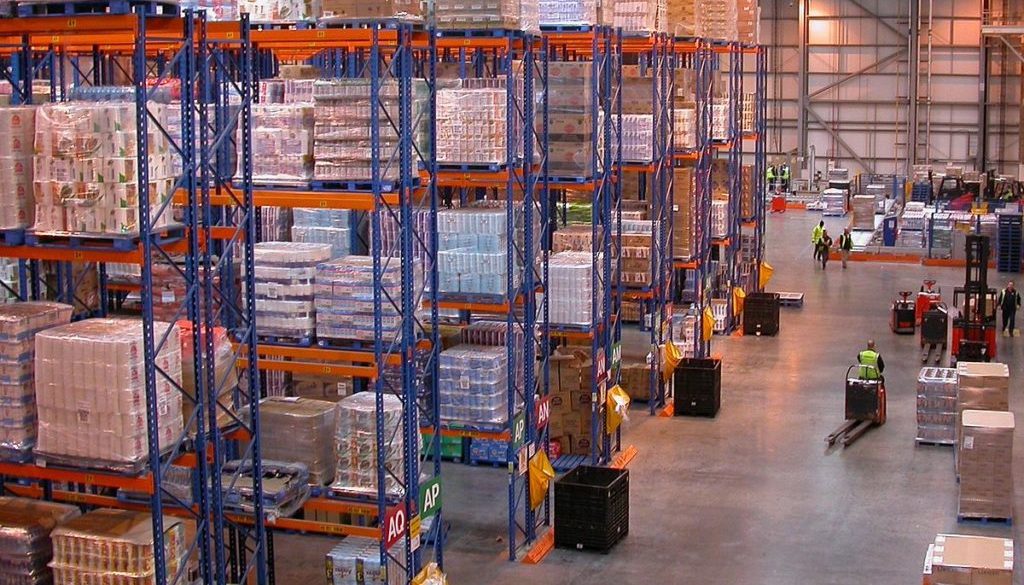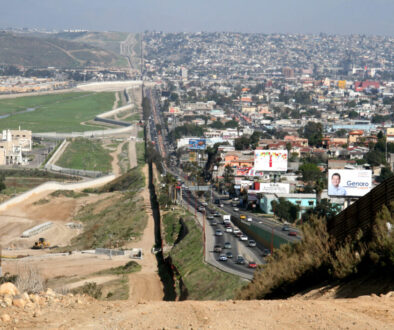Northern cities take advantage of expanding Mexican logistics centers
Despite experiencing the continuing effects of the coronavirus pandemic, Mexican logistics centers are expanding.
At the beginning of the coronavirus pandemic in 2020, manufacturing was affected by the collapse of global production lines in the face of the suspension of operational activities of many companies. This set of circumstances constituted a turning point for rethinking the production model that had been established over the last two decades.
This model required that the supply of material inputs be in geographic proximity to final assembly centers, thus, driving the concept of nearshoring. This situation, in the case of Mexico, created an important commercial opportunity given its advantageous geographic location and its participation in the USMCA. The USMCA, or the United States – Mexico – Canada Free Trade Agreement, is the most recent trade treaty that has been implemented between North’s three neighbors.
Despite the difficulties occasioned by the coronavirus pandemic, cities in northern Mexico have demonstrated their ability to attract investments by large companies and to create a robust industrial market even in adverse times.
Industrial demand for Mexican logistics centers in Mexico City, Monterrey, Guadalajara, and Tijuana far exceeded what was reported in the same period of the previous year. The gross demand for industrial space in the metropolitan area of Mexico City was 260 thousand m2 in the last quarter of 2020. The main sectors that contributed to this significant figure were e-commerce and logistics companies. These services are essential for supply chains to strengthen and detect new strategies to improve their operability.
Demand for space in Mexican logistics centers in Monterrey closed in the fourth quarter of 2020 with a gross demand of 195 thousand m2, which translates into an upward trend of 58% compared to the same period in the previous year. This dynamic has been driven by companies in the logistics, retail, automotive sector, and, mainly, manufacturing.
Guadalajara ended 2020 with a gross demand of 90 thousand m2 for the same period, thus reporting one of the best levels that has been achieved in recent years. Logistics companies, tobacco, storage, and medical device manufacturers were the main drivers behind this number. As a result of this robust activity, Guadalajara has been a market with relatively little unemployment.
Tijuana gradually regained demand over the past three quarters, with annual growth of 43%. At the end of 4Q 2020, companies’ growth in the logistics sector, the medical, food, metalworking, and a major revival of the manufacturing sector was reported.
Ciudad Juárez, Chihuahua, is another market for Mexican logistics centers that continues to report strong numbers. At the end of the last quarter of 2020, culminating with a total demand of 43 thousand m2. The main sectors generating this activity included logistics, automotive, and manufacturing.
By contrast, markets in Mexico’s Bajío region show a decline in demand. This is due to falling demand for the production of durable and semi-durable goods. The manufacture of these items takes up much of the industrial space in this region.
Markets such as Querétaro and Guanajuato, traditionally a very dynamic region, continue to account for demand volumes that are much lower than those recorded in pre-pandemic periods. They are far below those that were reported four or five years ago. During the fourth quarter of 2020, Querétaro recorded an absorption rate at Mexican logistics centers of only 5 thousand m2, Guanajuato 67 thousand m2, San Luis Potosí almost 25 thousand m2, while Aguascalientes did not report any additional demand for Class A industrial space during this period.
Vacancies continue to maintain healthy levels in all major markets, with the highest vacancy rate being that of the state of Guanajuato. Guanajuato closed the fourth quarter of 2020 with a rate of 8.6%, however, nationally the rate is 4.6%. Cities such as Guadalajara, Tecate, Saltillo, and Mexicali close the gap by reporting significant downward adjustments. On the contrary, the metropolitan area of Mexico City, Puebla, and Querétaro currently have vacancy rates that exceed 30% more than what was reported in the same period last year. Performance in Tijuana and Monterrey recorded numbers that are close to those reported previously.
Industrial rental prices for Mexican logistics centers have been impacted by two important issues, the first is the pressure generated by the low availability of vacant spaces. In cities such as Guadalajara and Tijuana annual rental rates have increased between 5 and 10%. The other factor that is affecting prices is the appreciation of the Mexican peso against the dollar.
The metropolitan area of Mexico City and Monterrey closed 2020 with prices similar to the same period of the previous year. Few markets have lower rental rates. Among these is Queretaro with an annual decrease of 3.5% and San Luis Potosí with 2.9%.
The behavior that the demand, vacancy, and price indicators have had, has allowed developers to initiate projects that had been in the planning stage. Although construction activity remained at the same levels of the last quarter of 2020, the annual comparison shows a 25% increase year over year in the square meters under construction.
During the last quarter of 2020, the metropolitan area of Mexico City reported that almost 150 thousand m2 began construction. This indicates that developers continue to expand their inventories in the north and near the center of the city. Tepotzotlán and Tultitlán were the most active areas with future developments that are planned for this region.
In the medium term, the development of new Mexican logistics centers is planned for the corridors north of the metropolitan area. This is where land is available that can house industrial complexes. This activity will drive new infrastructure and investment.
At the end of the fourth quarter of 2020, the inventory of industrial space in Mexico’s second-largest city, Monterrey expanded by approximately 177 thousand m2. This was from the termination of 11 new developments. Meanwhile, 13 projects began construction, 8 of them are speculative and 5 are build-to-suit. This activity points to a gradual recovery, quarter over quarter, beginning in the fall of 2020.
In Tijuana, the construction of Mexican logistics centers reflected a downward trend, while Guadalajara’s experience has been the opposite. Mexico’s third-largest city has recorded more than a 120% increase from the previous year.





